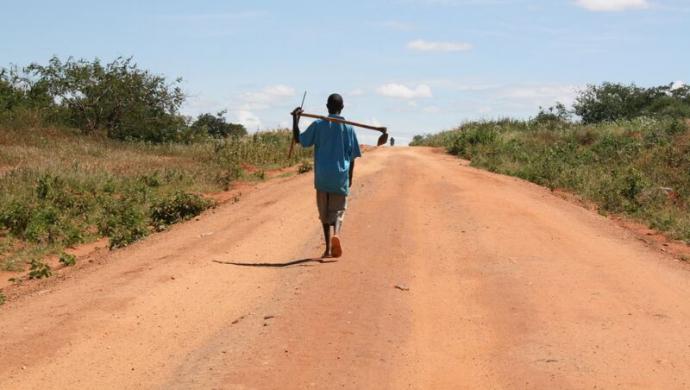ROME, 29 July 2016 (FAO-WFP): Protracted conflicts affecting 17 countries have driven millions of people into severe food insecurity and are hindering global efforts to eradicate malnutrition, two UN agencies have warned in a report submitted to the UN Security Council.
A new series of 17 country briefs prepared by the United Nations' Food and Agriculture Organization (FAO) and World Food Programme (WFP) and published Friday finds that conflicts have now pushed over 56 million people into either "crisis" or "emergency" levels of food insecurity when expressed in terms used by the Integrated Food Security Classification Phase (IPC) scale.*
Topping the list in terms of the sheer numbers of people whose food security is being negatively impacted by ongoing conflict are Yemen, where 14 million people – over half the population – are now in a state of hunger crisis or emergency on the IPC scale, and Syria, where 8.7 million people – 37 percent of the pre-conflict population – need urgent food, nutrition and livelihoods assistance.
In South Sudan where the situation is rapidly deteriorating 4.8 million people – some 40 percent of the population – are in need of urgent food, nutrition and livelihoods assistance.
And in countries coming out of extended periods of civil strife such as the Central African Republic and Colombia millions of people are still wrestling with high levels of food insecurity.
In other countries, while the overall absolute numbers of people facing food insecurity are lower, the share of people experiencing severe levels of food insecurity accounts for over half of the total population.
A staggering 89 percent of all Syrian refugees currently in Lebanon require urgent food, nutrition and livelihoods assistance.
In Burundi and Haiti, 23 percent and 19 percent of people are at IPC level 3 or 4, respectively, while in the Central African Republic, 50 percent of the population is at IPC scale 3 or worse.
Noting in their introduction to the briefs that "conflict is a leading cause of hunger – each famine in the modern era has been characterized by conflict," FAO Director-General José Graziano da Silva and WFP Executive Director Ertharin Cousin underscore how hunger feeds violence and drives further instability.
A vicious cycle
The most recent estimates suggest that approximately half of the global poor now live in states characterized by conflict and violence.
People living in such places can be up to three times more likely to be undernourished than those living in more stable areas.
Post-conflict countries with high food insecurity are 40 percent more likely to relapse into conflict within a 10-year timespan if hunger levels are not addressed.
Helping shape UN peacebuilding
The briefs shared with the Security Council today cover 17 countries where conflict has significantly affected food security:
in Latin America and the Caribbean, Haiti and Colombia; in Africa, Burundi, Central African Republic, Democratic Republic of the Congo, Guinea Bissau, Ivory Coast, Liberia, Mali, Somalia, South Sudan, and Sudan; in the Middle East, Lebanon, Iraq, Syria and Yemen; and in Asia, Afghanistan.
An additional brief on the regional Lake Chad crisis affecting Nigeria, Niger, Chad and Cameroon was also submitted. There, violence associated with Boko Haram has seen the numbers of displaced people triple over the past two years accompanied by rising levels of hunger and malnutrition.
The Security Council will receive from FAO and WFP regular updates on the food security situation in conflicted-affected states.
* In countries where the IPC scale or a related tool, the Cadre Harmonisé (CH), are used to measure food insecurity, the most recent IPC/CH results were used to prepare the briefs.
For countries where the IPC is not used, such as Colombia, Lebanon, and Syria, existing data and analysis from FAO's Global Information and Early Warning Service (GIEWS) and WFP's Vulnerability Analysis and Mapping (VAM) initiative were used.
For non IPC countries, some results were expressed in IPC terms as a general indicator of the severity of food insecurity, using IPC standard thresholds, but were not produced through an official IPC process.














